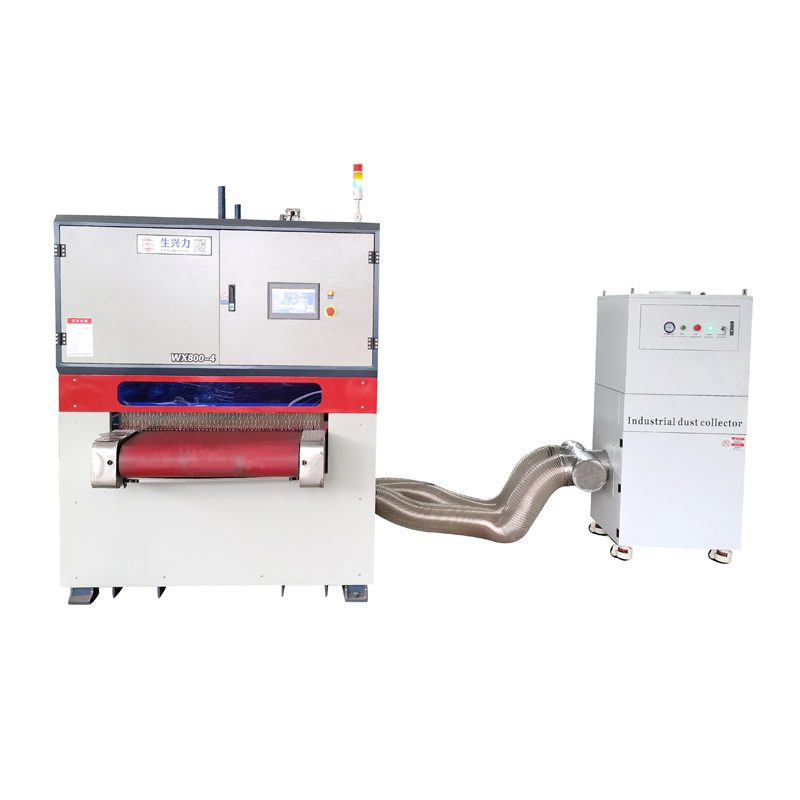

Belt grinding has two basic applications, namely lightweight grinding and weight grinding. The material removed by light grinding is very little, and it can only play the role of surface pre-processing or workpiece finishing, such as polishing, deburring, etc., and the speed of abrasive belt grinding is faster when light grinding is carried out. Weight grinding plays a coarse and fine machining role on the workpiece, and its advantages are high cutting rate, small cutting heat, small workpiece deformation, and easy to control flatness and surface roughness.
Contact wheel grinding and free grinding are the two major processes of belt grinding, the former is suitable for rough grinding, semi-fine grinding and fine grinding, the latter is also used for semi-fine grinding and fine grinding, but mainly plays a polishing role.
Abrasive belt grinding can improve the machining accuracy, which is controlled by copying method and fixed size machining form. The copying control is to use the profile plate to control the feed speed in the tangent direction within a certain range, so that the workpiece is grinding according to the profile plate. Length machining is based on the width of the workpiece and the change of processing allowance, the feed speed of the workpiece is properly controlled, and the normal grinding resistance is controlled to a certain extent, and the grinding residue is maintained to a certain value (not zero).
Belt grinding should pay attention to the following matters:
(1) Grinding depth When grinding the belt, because the contact wheel is elastic, the feed depth is different from the actual depth, and the ratio is about 3:10
(2) The initial grinding position of the new abrasive belt because the new abrasive belt cutting amount is more than the old abrasive belt, so the initial grinding position of the new abrasive belt cannot be fixed, and the initial feeding tool should be rotated from the left and right end of the workpiece to avoid taper of the workpiece. The new abrasive belt can also be identified by regularly measuring the outer diameter and identifying the outer circle with Z size, and the new abrasive belt can be fed from there, or the geometric accuracy can be improved by repeated grinding there.
(3) The use of non-feed grinding to improve the surface roughness of the workpiece, after fine grinding can be used 3 to 4 times without feed, the effect is very good.
(4) Processing allowance General abrasive belt grinding allowance 0.04-0.08mm. When the surface roughness value before grinding is higher than Ra2.55m, the processing allowance can be slightly more, and the surface roughness value before free polishing is Ra 1.255m to RaO.635m, and the processing allowance is 0.01 to 0.02mm.
In addition, because the abrasive cutting edge of the new sanding belt is very sharp, and the height is different, only a part of the cutting edge works, affecting the roughness of the workpiece surface, so it is necessary to trim the sanding belt to make all the cutting edge processed. There are two kinds of dressing methods: (1) Wrap the old sand belt on the round wood stick, hold the wood stick well, and grind the new sand belt rotating on the contact wheel, then the force should be appropriate; ② In the semi-fine grinding process, the selected new sand belt to participate in the grinding work, to be slightly dull cutting edge, replaced for fine grinding.
